
A woodworking class is a woodworking class is a woodworking class, like Gertrude Stein's rose. In Woodworking any project can be built in any class. A project begun in one quarter may be continued in subsequent quarters, even skipping a quarter or two or even into the next year. Projects take as long as they take: one student may complete a Pond Yacht in two quarters, while another might take a three or four. While trying their best, students work at their own pace, which is normal and natural.
The only specialized class is Woodworking Community Service, given in the second semester. See here. The knife lesson, a two period intensive experience, is the only full class lesson I give in the shop, which must involve nearly all the students in a class. Because many classes include students with different levels of experience, it is only given at certain times. See here.
How many and who?
The maximum number of students in a Woodworking class is 14. Because, by design, everyone is doing their own thing, I must run really hard to get to everyone. Students are expected to understand that the price of being able to choose their own projects, instead of everyone doing the same, teacher chosen, project, is that you may have to wait patiently for help. Patience and good manners are among my expectations in the shop, not only because they make the class run smoothly, but because the class structure offers a good opportunity to teach these basic social skills.
Complex or unusual projects take more of my time for planning and problem solving and for teaching special concepts and skills. I expect students who attempt unique projects to understand that they may have to wait longer for help than those with more routine projects. If three students are starting spoons, I can help all of them at once, which helps me get to others more quickly.
Do girls take Woodworking? Of course they do; just check out the photos! Most classes have more boys than girls, though sometimes it is the other way around. I usually don't even notice gender ratios in classes, but I try to be sensitive when there is only one member of a gender in a class since that can be uncomfortable, especially at this age.
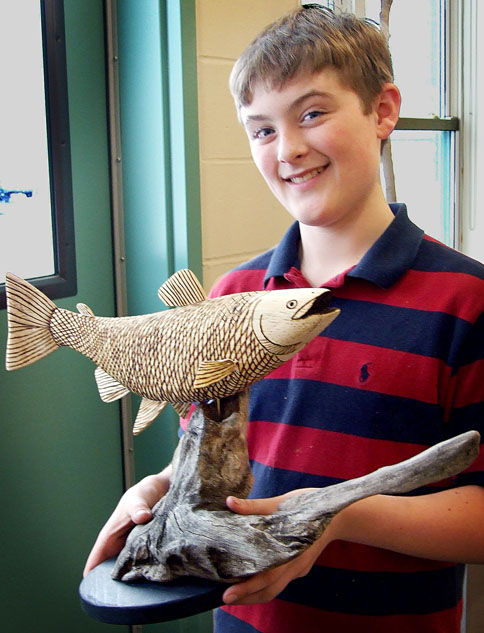 |
How do students sign up for Woodworking?
Woodworking is an elective course; students choose to be in these classes. At arena scheduling each quarter, students fill in the openings in their schedules. We try to make it a personal experience. Elective teachers usually sit behind tables to greet and encourage students as they request classes. I love to be there to tell students about woodworking, discuss projects they may be working on and to help them solve scheduling problems on the fly. It is also a good opportunity to reinforce expectations of shop behavior when necessary.
Woodworking is a popular class and sometimes students have trouble finding a place that works in their schedule. Class times may change from quarter to quarter to give more students access to various electives and occasionally students are out of luck when trying to get into a favorite. Sometimes classes are already full when it is a student's turn to sign up. When that happens at arena scheduling, we try to help them find the class at a different time than they had planned. We try to be fair by rotating the order in which homerooms sign up within each grade from quarter to quarter. That's why we can reassure disappointed students that they may have a better chance the next time.
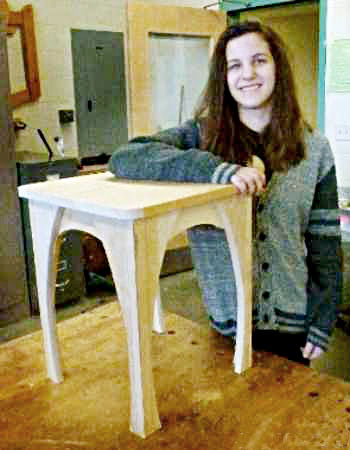
The maximum time in Woodworking is three classes per week. Students may take one two-day-a-week-class (Monday-Thursday or Tuesday-Friday) and/or a single class on Wednesday. Some students take two classes on Wednesday if it fits their schedules. When Community Service woodworking classes (below) are offered in the second semester, they may be taken in addition to the maximum three woodworking classes, a boon to students that love to be in the shop.
Cleanup?
We have a rotating cleanup responsibility in each class. Students are assigned numbers at the beginning of the quarter, one through three, and when their number matches the week's number they have a few extra responsibilities at the end of the period. So its one week on and two weeks off.
Our classes are short, only about 40 minutes, so I try to keep cleanup duty simple. After they put their own projects and tools away and tidy up their own work areas, they are responsible to make sure the shop is ready for the next class. That may involve clearing off tables, moving stools and helping kids who are a little behind. It often means following up on things others forgot to do. Ideally, everyone takes care of their own stuff, and there isn't anything for the cleanup kids to do. Ocassionally, that actually happens.
Cleanup does not include sweeping the floors unless they are super messy. I think shop floors should have some wood shavings on them anyway, just for atmosphere, and a clean floor would be messy again a few minutes into the next class. So the place is swept once a day and student's cleanup responsibilities are simpler and quicker as a result. It only takes a minute or two for students to help get the shop ready for the next class.
Woodworking Community Service
Community Service Woodworking classes give students a chance to experience the value and fun of helping others by building things for the school. Regular Woodworking classes are intentionally designed to emphasize individuality and self expression, but in Community Service classes, students often work in teams and often rotate in and out of ongoing projects. It is a group effort and, while I welcome creative input, I choose the projects and direct the activities. Though most of it is shared effort, students are typically very proud of what they've done. Delivering a finished project to the teacher who requested it is a happy experience for students.
Two Community Service classes are offered in the third and fourth quarters. They are scheduled in consecutive periods, so the first class can leave projects they were working on for students in the next class to continue. While most projects are built by teams, some projects that require special attention may be built by individuals or by specific teams, rather than sharing them between kids and/or classes.
Through the years we have built all kinds of things. We've built small items like table-top easels and Tower of Hanoi games. We've built many benches for the hallways of the school. We've built storage racks for Physical Education classes. We even built a throne for a Spanish classroom! Several years ago a teacher requested a tall table at which students could work standing up. That table was so popular that we have probably built a dozen or more for classrooms around the building. We now seem to have requests for them every year. We also build sets and set pieces for the school play which goes up in mid-May. Students enjoy contributing to the play in other ways than acting or being on the stage crew.
 |
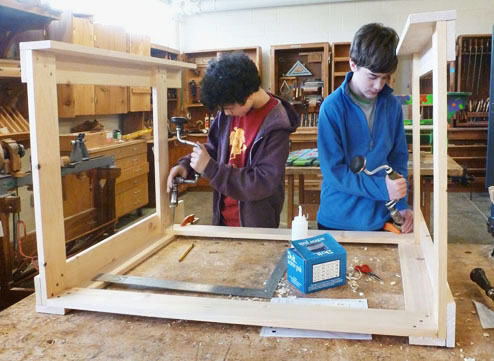 |
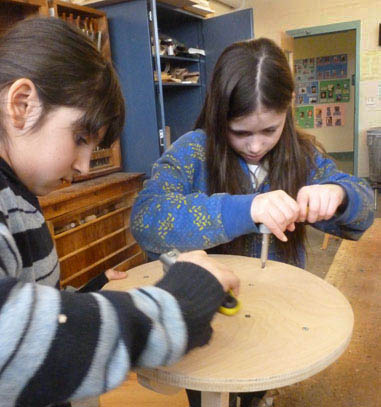 |
| Repairing the Adirondack chairs from the lobby. | Building a high table for a classroom. | Building a stand for a classroom. |



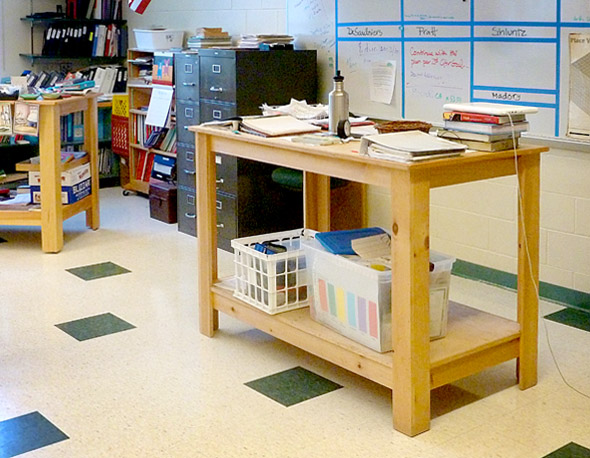
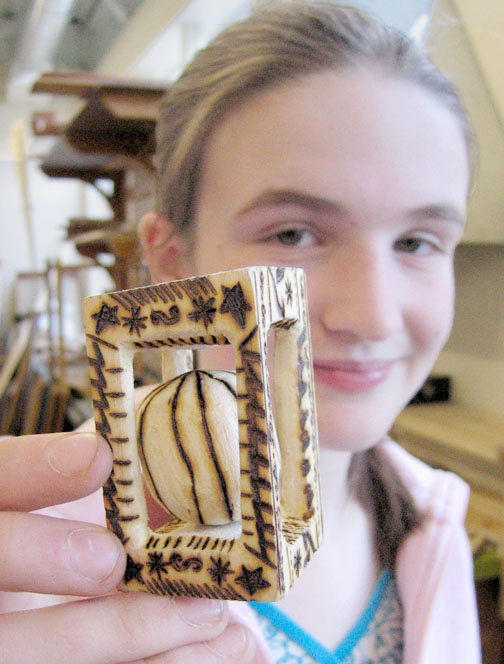 beliefs."
beliefs."